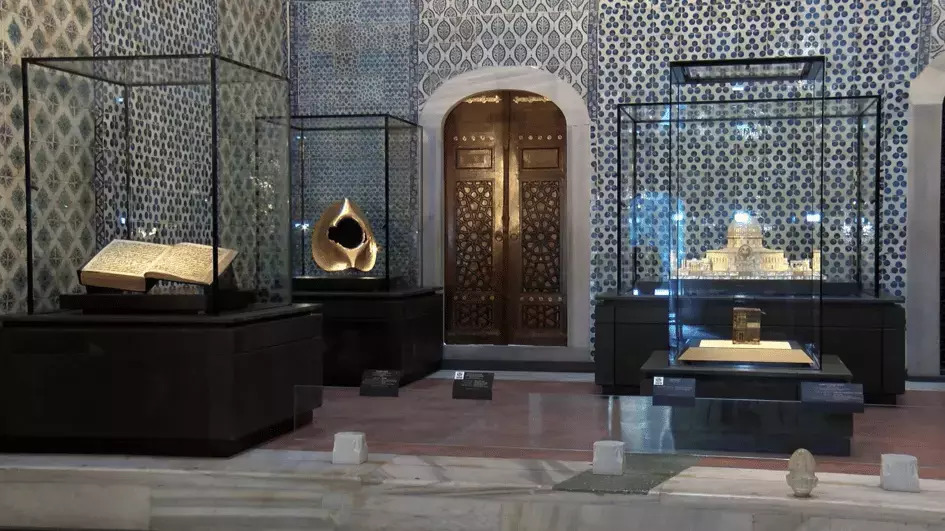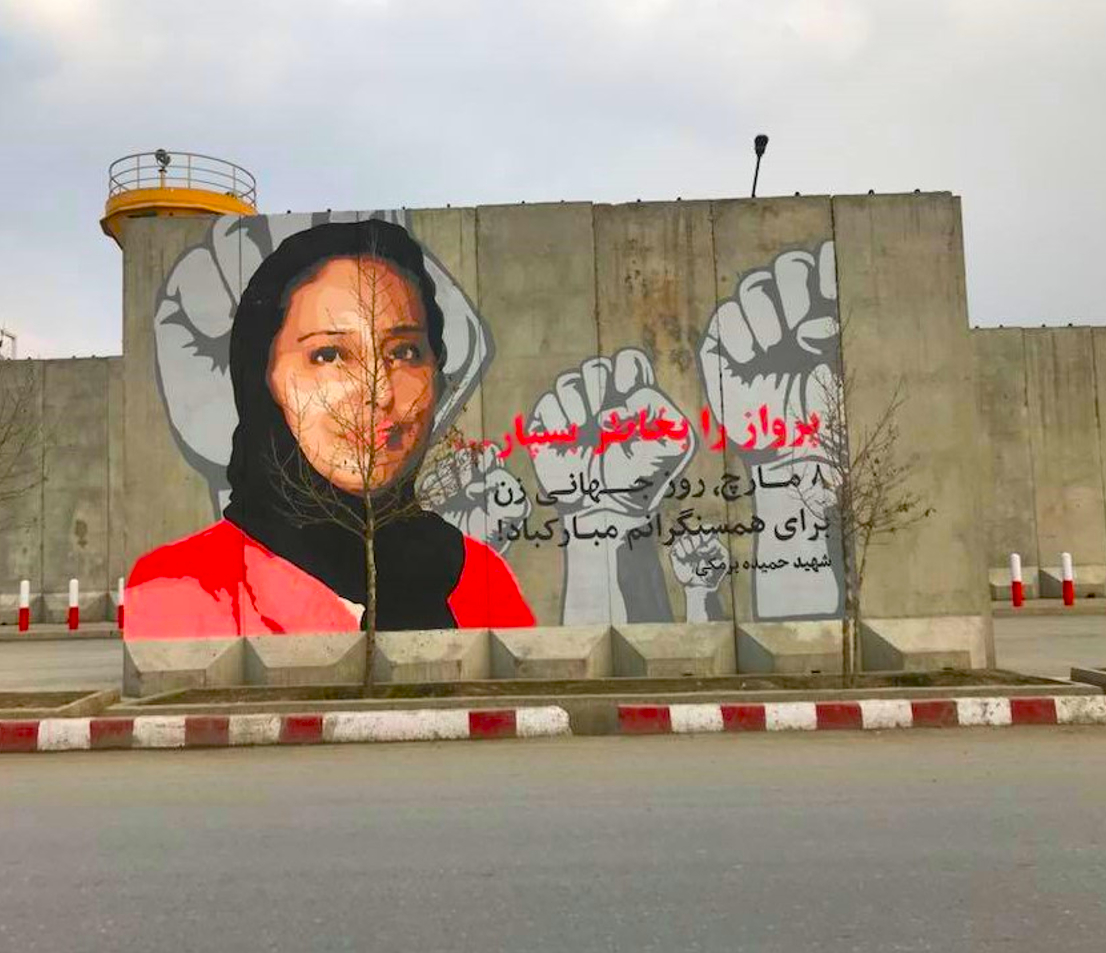Topkapı Palace enlarged its collection. Currently, approximately 600 works of art are on display for visitors in the Chamber of Holy Relics at Topkapı Palace.
This chamber, located within the National Palaces in Fatih, houses a multitude of historically significant artifacts, including the Hırka-ı Saadet (Holy Mantle) belonging to Prophet Muhammad, his sword, the case containing his broken tooth from the Battle of Uhud, his letters, beard, and footprint.
Among the other notable pieces exhibited in this section are swords belonging to the four caliphs and the companions, keys to the Kaaba, the Hacerü’l Esved case, and mementos from the Harem-i Şerif.
Discussing the restoration efforts undertaken in the Chamber of Holy Relics and the significance of the artifacts on display, Yasin Yıldız, President of the National Palaces Department, emphasized the chamber’s importance as the heart of Topkapı Palace for both local and foreign visitors.
Yıldız highlighted the meticulous preservation of these works for over 500 years, noting that while they were once only accessible to a select few palace residents, they have been open to visitors, both local and international, in recent years following the palace’s transition into a museum.
He underscored the significance of both the location and content of the chamber, emphasizing the attention garnered by the restoration efforts and new display arrangements introduced last year.
Of particular importance among the relics is the Hırka-I Şerif, the cardigan of Prophet Muhammad. Yıldız also mentioned relics such as the Quran dedicated to Prophet Osman, the banner of Prophet Muhammad, his personal weapons, beard (Sakal-ı Şerif), and his tooth (Dendan-ı Şerif).
Additionally, Yıldız highlighted the role of Fahrettin Pasha, the defender of Medina, in transporting souvenir artifacts from the holy lands of the Ottoman Palace to Istanbul before Medina fell, emphasizing the historical significance of this collection.
Yıldız highlighted the necessity of updating the previous display arrangement of the Chamber of Holy Relics, emphasizing the impact of conditions over the years.
“Now, a highly specialized display system has been implemented here, considering that there are works dating back several thousands of years. These works vary greatly in terms of their materials and hold immense spiritual significance for the Islamic world, particularly the Hırka-ı Şerif. A meticulously designed system was put in place to showcase them, and establishing this system took two years,” he explained.
Furthermore, Yıldız emphasized the importance of the showcase arrangement, which has been designed to withstand various climatic conditions and natural disasters, marking a significant achievement for the museum. He also noted that the number of works exhibited in the chamber increased from 60 to 300 last year.
“This expansion is crucial because it allows us to present every work in our collection to our visitors effectively,” Yıldız concluded, underscoring the commitment to providing an enhanced and comprehensive experience for visitors exploring the historical artifacts housed within the Chamber of Holy Relics.









